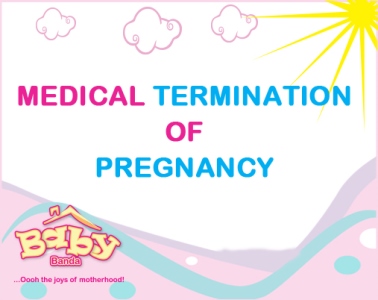This is the use of medication to terminate the pregnancy and is done within 49 days from the start of the pregnancy. Pregnancy usually starts two weeks after the first day of a menstrual period, so this corresponds to nine weeks from the last menstrual period. Medications used to induce abortion include:
• Mifepristone: This drug is taken orally as a pill. This drug counters the effect of progesterone, a hormone necessary for pregnancy. Side effects include nausea, vomiting, vaginal bleeding and pelvic pain. These symptoms usually can be treated with medications. In rare instances, there may be heavy bleeding. In that case, you may be admitted to a hospital and given blood transfusions.
• Misoprostol (Cytotec): This drug is mostly used in conjunction with mifepristone to induce a medical abortion. Misoprostol is a prostaglandin-like drug that causes the uterus to contract. One form can be taken by mouth. The other is inserted into the vagina. The vaginal form is less likely to cause diarrhoea, nausea and vomiting. However, the vaginal form is associated with a higher risk of infection. To decrease the risk of infections, many doctors now prefer the oral form of misoprostol, followed by a 7-day course of the antibiotics.
• Methotrexate: This drug is usually injected into a muscle. Around 70% of pregnancies abort within 2 weeks. Methotrexate is the medication most often used to treat ectopic pregnancies which are implanted outside the womb. It kills the fast-growing tissue of ectopic pregnancies. When doctors give methotrexate to treat ectopic pregnancy, pregnancy hormone levels must be monitored until levels are undetectable in a woman’s bloodstream. This monitoring is not necessary when methotrexate is used for medical abortions, where the pregnancy is known to be implanted in the womb.
A woman should not have a medical abortion if she:
• Is more than 49 days pregnant.
• Has chronic adrenal failure or is taking certain steroid medications.
• Does not have access to emergency care.
• Has bleeding problems or is taking blood-thinning medication.
• Has uncontrolled seizure disorder.
Surgical abortion
• Menstrual aspiration. This procedure, also called menstrual extraction or manual vacuum aspiration, is done within one to three weeks after a missed menstrual period. This method can also be used to remove the remaining tissue of an incomplete miscarriage (also called a spontaneous abortion). A doctor inserts a small, flexible tube into the uterus through the cervix and uses a handheld syringe to suction out the pregnancy material from inside the womb. Local anaesthesia is usually applied to the cervix to decrease the pain of dilating the cervix. Local anaesthesia numbs only the area injected and you remain conscious. Menstrual aspiration lasts about 15 minutes or less.
• Suction or aspiration abortion: This procedure can be done up to 13 weeks after the first day of the last menstrual period. Suction is the procedure most commonly used to end a pregnancy. The cervix is dilated (widened) and a rigid hollow tube is inserted into the uterus. An electric pump sucks out the contents of the uterus. The process takes about 15 minutes. Local anaesthesia is usually applied to the cervix to minimize the pain of dilating the cervix. Medication given intravenously (into a vein) may help to decrease anxiety and relieve pain.
• Dilation and curettage (D and C). In a dilation and curettage, the cervix is dilated and instruments with sharp edges, known as curettes, are used to remove the pregnancy tissue. Suction is often used to make sure all the contents of the uterus are removed.
• Dilation and evacuation (D and E). This is the most common procedure for ending a pregnancy between 14 and 21 weeks. It is similar to suction but with larger instruments. The cervix has to be dilated or stretched open to a size larger than required for a D and C. Suction is used along with forceps or other special instruments to ensure all the pregnancy tissue is removed. The procedure takes more time than other abortion procedures.
• Abdominal hysterotomy. This is a major operation to remove the foetus from the uterus through an incision in the abdomen. This is rare but may be necessary if a Dilation and Evacuation cannot be done. Anaesthesia will make you unconscious for this surgery.
Induction of labour
After 14 weeks of pregnancy, termination can be done by giving medication that causes the woman to go into labour and deliver the foetus and the placenta. The procedure usually requires hospitalization for more than a day because it involves labour and delivery. Sometimes dilation and evacuation are necessary to completely remove the placenta. Labour can be induced in one of three ways:
• Invasive. Injecting labour-inducing medications by passing a needle through the abdomen and into the uterus, usually within the amniotic sac.
• Non-invasive. Giving labour-inducing medications by mouth, intravenously (into a vein), through an injection into a muscle, or inserted in the vagina.
• A combination of invasive and non-invasive approaches. Usually necessary when abortion is done late in the second trimester, before 24 weeks.













